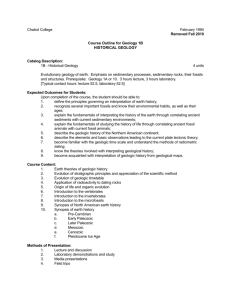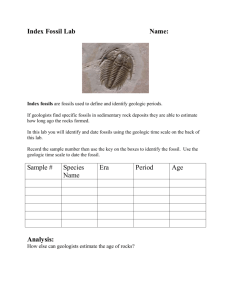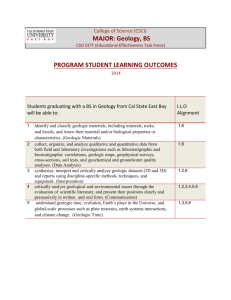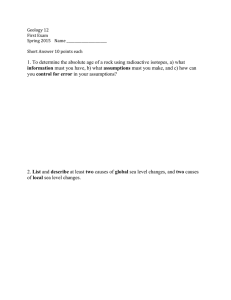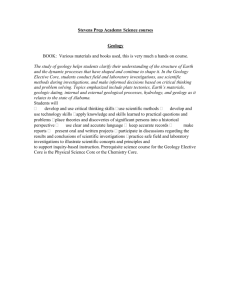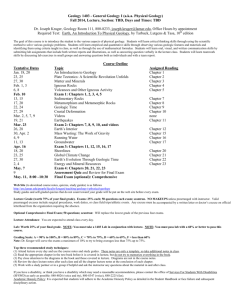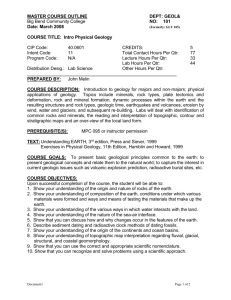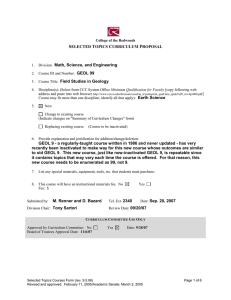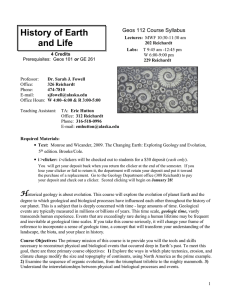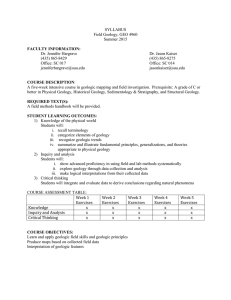College of Arts and Sciences Program Goals and Student Learning Outcomes
advertisement
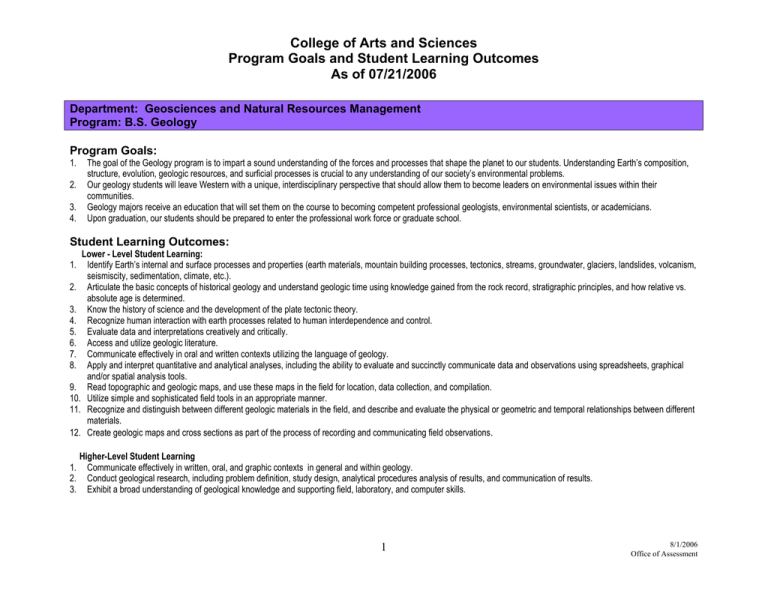
College of Arts and Sciences Program Goals and Student Learning Outcomes As of 07/21/2006 Department: Geosciences and Natural Resources Management Program: B.S. Geology Program Goals: 1. 2. 3. 4. The goal of the Geology program is to impart a sound understanding of the forces and processes that shape the planet to our students. Understanding Earth’s composition, structure, evolution, geologic resources, and surficial processes is crucial to any understanding of our society’s environmental problems. Our geology students will leave Western with a unique, interdisciplinary perspective that should allow them to become leaders on environmental issues within their communities. Geology majors receive an education that will set them on the course to becoming competent professional geologists, environmental scientists, or academicians. Upon graduation, our students should be prepared to enter the professional work force or graduate school. Student Learning Outcomes: Lower - Level Student Learning: Identify Earth’s internal and surface processes and properties (earth materials, mountain building processes, tectonics, streams, groundwater, glaciers, landslides, volcanism, seismiscity, sedimentation, climate, etc.). 2. Articulate the basic concepts of historical geology and understand geologic time using knowledge gained from the rock record, stratigraphic principles, and how relative vs. absolute age is determined. 3. Know the history of science and the development of the plate tectonic theory. 4. Recognize human interaction with earth processes related to human interdependence and control. 5. Evaluate data and interpretations creatively and critically. 6. Access and utilize geologic literature. 7. Communicate effectively in oral and written contexts utilizing the language of geology. 8. Apply and interpret quantitative and analytical analyses, including the ability to evaluate and succinctly communicate data and observations using spreadsheets, graphical and/or spatial analysis tools. 9. Read topographic and geologic maps, and use these maps in the field for location, data collection, and compilation. 10. Utilize simple and sophisticated field tools in an appropriate manner. 11. Recognize and distinguish between different geologic materials in the field, and describe and evaluate the physical or geometric and temporal relationships between different materials. 12. Create geologic maps and cross sections as part of the process of recording and communicating field observations. 1. 1. 2. 3. Higher-Level Student Learning Communicate effectively in written, oral, and graphic contexts in general and within geology. Conduct geological research, including problem definition, study design, analytical procedures analysis of results, and communication of results. Exhibit a broad understanding of geological knowledge and supporting field, laboratory, and computer skills. 1 8/1/2006 Office of Assessment

